Drivers and admirers of electric vehicles have all wondered at some stage…why aren’t OEMs like Nissan making use of improving solar power technology to improve the range and energy efficiency of their electric cars?
Tesla makes its Solar Roof and Solar Panels technology, and Nissan also has entered the fray, selling its own solar panels to Leaf customers as a way of guaranteeing green charging for their cars.
Wouldn’t incorporating solar panels into vehicles essentially solve the problem of sustainability? It would mean you could park your Leaf anywhere during the day and it would be charging up, adding range back into the battery, or perhaps into some kind of backup battery system to use in emergencies. Wouldn’t that be fantastic? What’s stopping them?
In today’s blog, we’re taking a closer look at solar panels and the Nissan Leaf, what technologies have been announced officially, and what “unofficial” solutions others have come up with over the years. It seems that the quest for more sustainable, even perpetual EV cars is alive and well in the world.
Question: Why Can’t We Just Slap Solar Panels On the Roof and Become Self-Sufficient?
If you’ve ever vented your frustration at the lack of public charging points, or the added costs of installing a home charging system in your garage or driveway, then you might have fantasized in your mind about ways to make your Nissan Leaf independent of the nation’s mainstream electricity grid.
If you could generate your own power at home, you could use some or all of it to power your Nissan Leaf and thus make even greater savings over time!
So, why not just stick some solar panels on the roof? Solar panels are more advanced than ever these days. Surely a well-placed deployable array on the roof would get the job done, no? Heck, 19 year old students from China have done it easily enough:
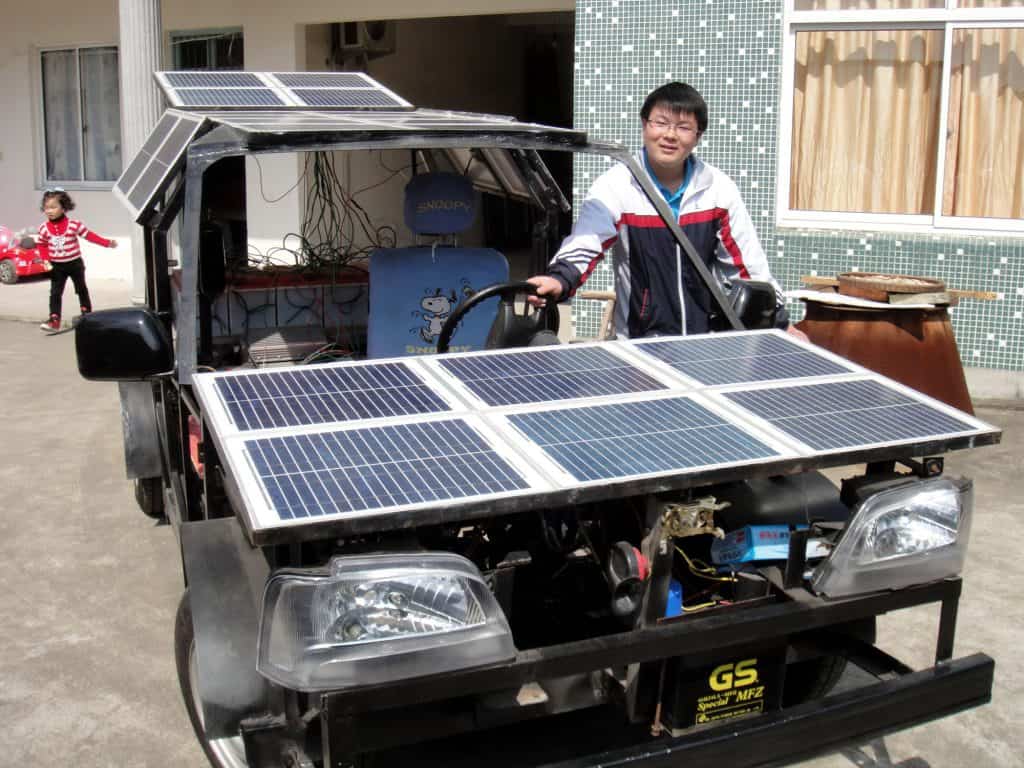
While technically it’s possible to do this with a Leaf (which we will explore further below in our section covering DIY solutions) it’s not practical for the majority of people, and here’s why…
Expense
Solar panels do vary massively in price, but a set of panels that are about the size to fit on your car roof as a deployable or fixed photovoltaic unit cost anywhere from $2,000 to $16,000 depending on their size, quality, brand, efficiency, and so on. To run an EV efficiently, you’d need very powerful solar arrays, too. That’s a given.
The Nissan Leaf you have is worth at most about $35,000 if it’s brand-new and you just bought it. After that, they tend to depreciate very, very rapidly. Could you really justify spending $16,000 just to make your depreciating Leaf more energy-efficient? Is it worth it?
Engineering
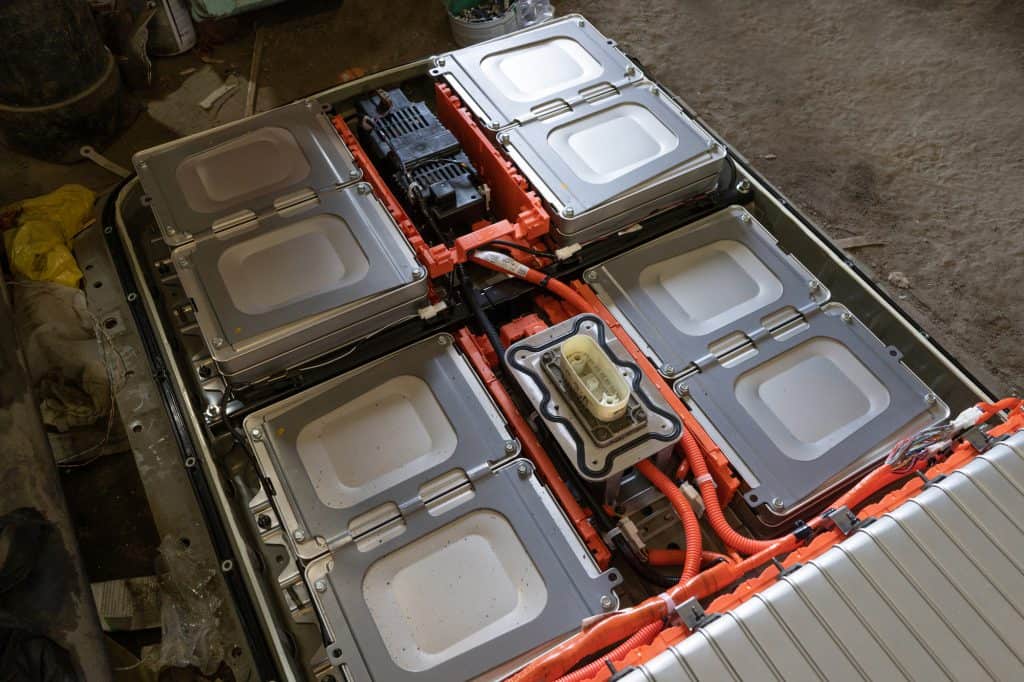
To paraphrase Boromir from the Lord of the Rings trilogy: “one does not simply slap solar panels onto the roof of a Nissan Leaf and start drawing power”! The panels have to be connected to the car’s main battery, something that the vast majority of even the most enthusiastic and knowledgeable amateurs have not even bothered to attempt.
Besides the raw power connection, you’d also need to wire up the mechanism to have them deployed on the roof if you want to get the most out of such a technology. All of this together also creates another problem to do with engineering — weight. A single 100-W unit capable of charging just low-voltage devices can weigh 25-30 lbs.
Electric cars are heavy enough with the massive lithium battery pack, do you really want to add more to that?
Nissan Makes Solar Panels – Why Don’t They Attach Them to the Leaf?
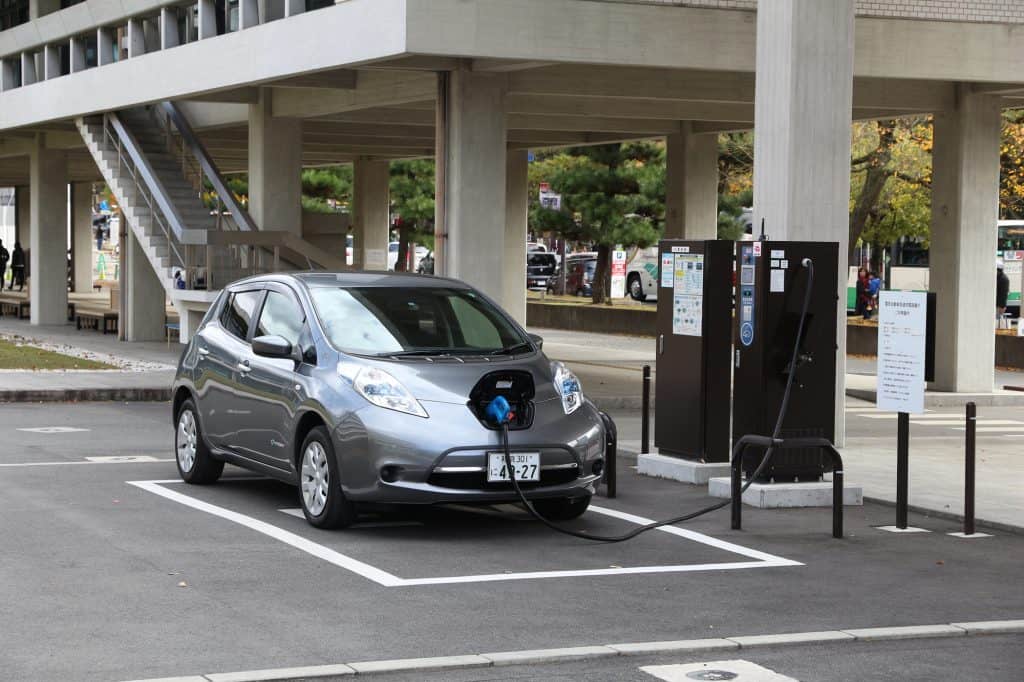
Some people out there seem to have forgotten that earlier models of the Nissan Leaf actually did come with a built-in solar power solution. Specifically, the SL trim had a small solar panel built into the rear spoiler that would continuously provide electrical charge while the car was parked in direct sunlight.
As good an idea as that was in theory, it didn’t work out great in practice according to the multitude of Leaf drivers who just complained about it. They would point out that the car had to be situated in direct (and strong) sunlight for many, many hours at a time for it to have any meaningful effect.
That’s not something you can reasonably assure in most parts of the country, or indeed the wider world. But in 2018, Nissan went one better…
Nissan Energy – Solar Panels for the Leaf
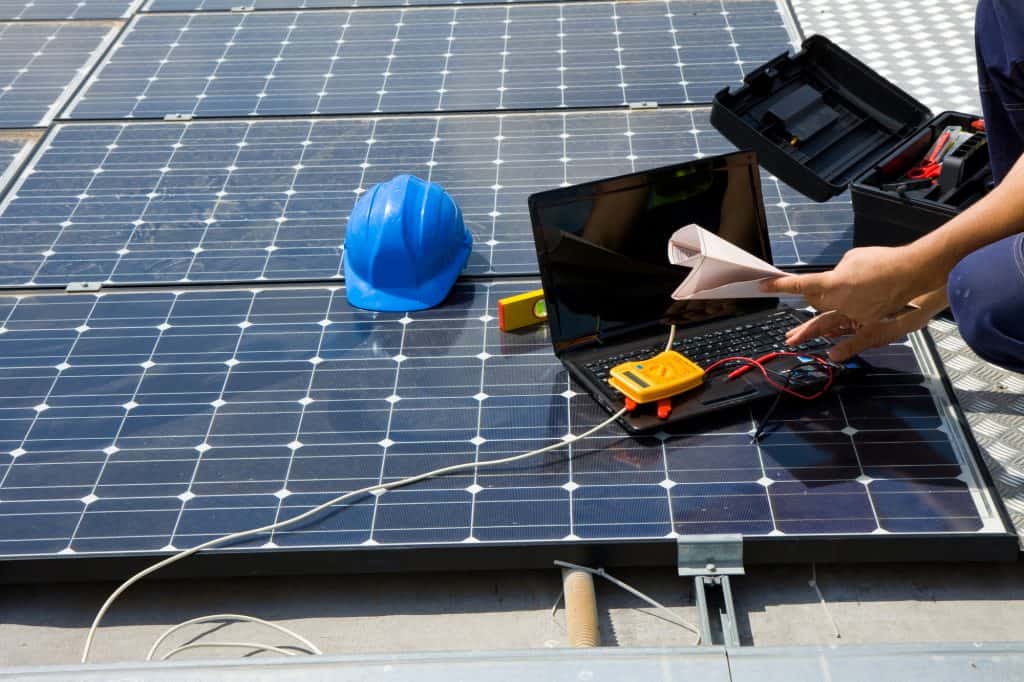
Back in April and May 2018, Nissan made a series of announcements that were widely reported in which they detailed their plans to sell owners of the Nissan Leaf rooftop solar panels. To be clear, the “rooftop” in question was that of their house, not their car.
The solar panels would be installed on the house’s roof where they could collect energy all day and send it to accompanying batteries. Nissan Leaf owners could then tap into this energy reservoir and deliver themselves a car battery full of genuine green energy.
Interestingly for some, this scheme was first announced as being launched in the UK. Now, the UK is a beautiful country, but it’s hardly renowned as the sunshine capital of Western Europe, or Northern, Southern or Eastern Europe, for that matter.
In fact, if you’ve got a moment, we’d like to say that in a straw poll of which country we widely suspected would be chosen as a home for a solar energy pilot scheme run by any company, we would likely vote the UK as being absolutely bottom of that list.
But, detractors beware! As it happens, the UK’s climate and geographical position make it quite an ideal location for such a scheme:
- First, the solar panels in question work just about as well in indirect sunlight as well as direct sunlight, so there’s plenty of energy to be had even when it’s cloudy out.
- Secondly, the UK’s northerly position on the globe gives it amazingly long days in the summer, sometimes more than 16 hours of daylight. Where there’s daylight, there’s solar power to be had.
So, that explains Nissan’s choice of the UK for this scheme. On top of that, Nissan has a good relationship with UK partners, and their factory in Sunderland, in the northeast of England, became even more renowned for producing the 500,000th Nissan Leaf in October, 2020. Move over, Smyrna Tennessee, it turns out you’re not Nissan’s favorite child, after all!
The implications of the solar scheme are quite profound, but they don’t further our cause for the range-increasing solar panels we were previously talking about, nor do they offer a portable charging solution. It’s an interesting move, and perhaps it’s all a prelude to Nissan eventually once again incorporating solar technology into the cars themselves, but for now we can’t know for sure.
Could I Fix Solar Panels to My Nissan Leaf Myself?
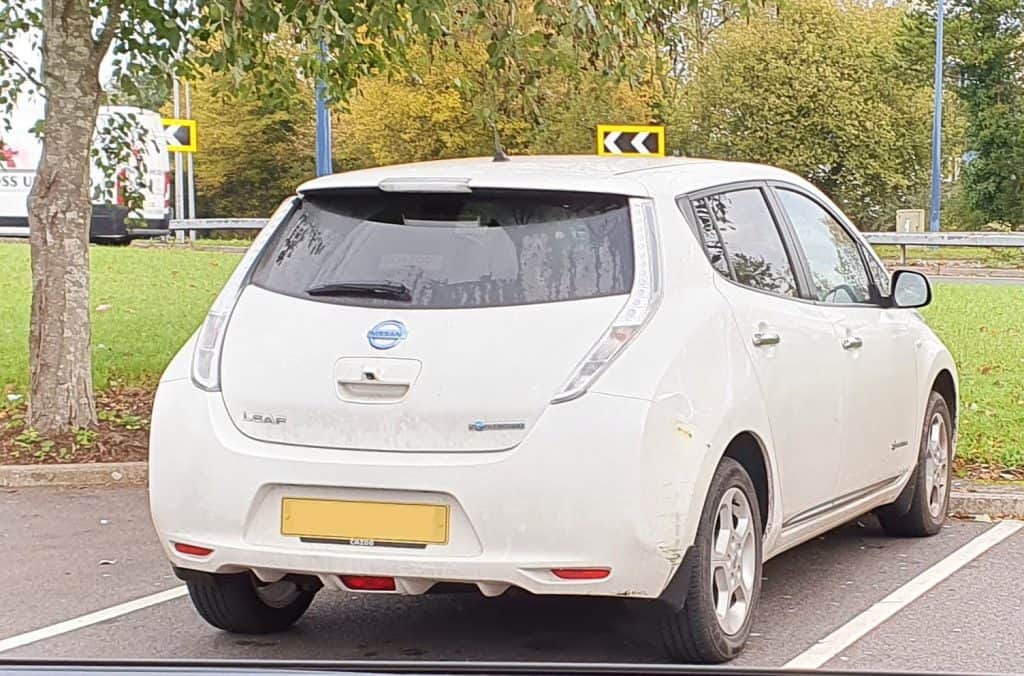
There’s at least one person out there in cyberspace — YouTube Channel ‘Innovative Sustainable Solutions‘ — who is very proud of how he has rigged a solar array to his own Nissan Leaf, but he admits that in fact it really works as more of a mobile version of the above-described Nissan Energy solution that launched in the UK.
At the expense of huge amounts of storage space in his car, not to mention the weight of a solar array on the roof, he has created a system whereby his car can gather solar energy and store it separately from the main battery.
The critical point here, however, is that he hasn’t managed to hook up the solar array directly to his Nissan Leaf battery. On the other hand, in one of his 2020 videos, he interviews one person via Zoom who has managed to do just that.
James, from Real Solar Cars
Sam, the owner of Innovative Sustainable Solutions, conducts an interview with James, an electrical engineer and owner of the Real Solar Cars channel on YouTube in that same 2020 video we linked above. Using his particular skills, James was able to identify key wires and systems that controlled various aspects of a standard EV battery setup.
This allowed him to then create his own custom circuit board which he installed under the hood of his Chevrolet Bolt, which in turn allowed solar power collected directly from his roof-mounted solar panels to charge his main battery without problems:
Solving the Connector Problem
The main issue that prevents most from rigging the solar array in the same way James has is caused by the way the standard charging process works in cars like the Nissan Leaf. When you plug in a Leaf, you will hear first of all the beeps of the car recognizing the power input, and then you will hear a clicking sound. That last sound is the connectors moving into place on the battery to start the charging process.
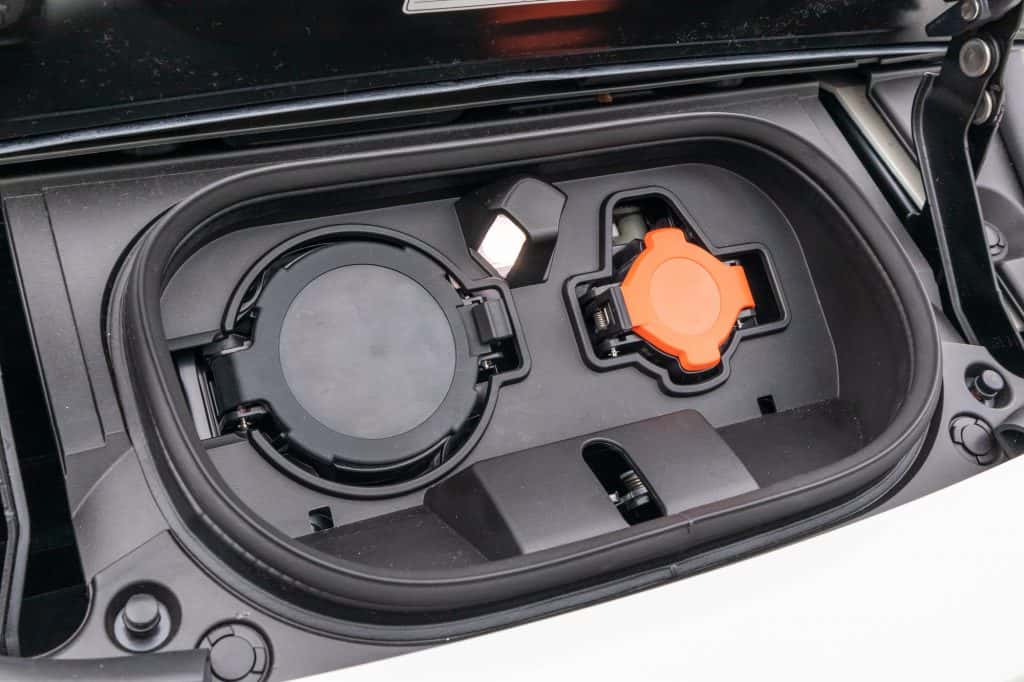
These connectors work a lot like a starter on a regular car, and this in itself was the problem encountered by solar enthusiasts. Sam explains before interviewing James that in order for those connectors to work and stay in place, a certain steady supply of power needs to be flowing into the battery. If the supply is interrupted, the connectors will detach until the right power rating is detected again, at which point they will resume.
Imagine a solar power array that gets interrupted by the shade of a cloud overhead. Power levels would drop and the connectors would detach, and then reattach when the cloud moves on. Imagine your car sitting there all day with the connectors attaching and detaching over and over. In ICE car terms, it would be like starting your car over and and over and over. Eventually you’re going to wear out the starter!
James’ solution identified the key wires that controlled these components, and his circuit board was able to manage the process entirely.
Conclusion: Solar Panels Can Work, So Why Aren’t OEMs and Owners Everywhere Doing This?
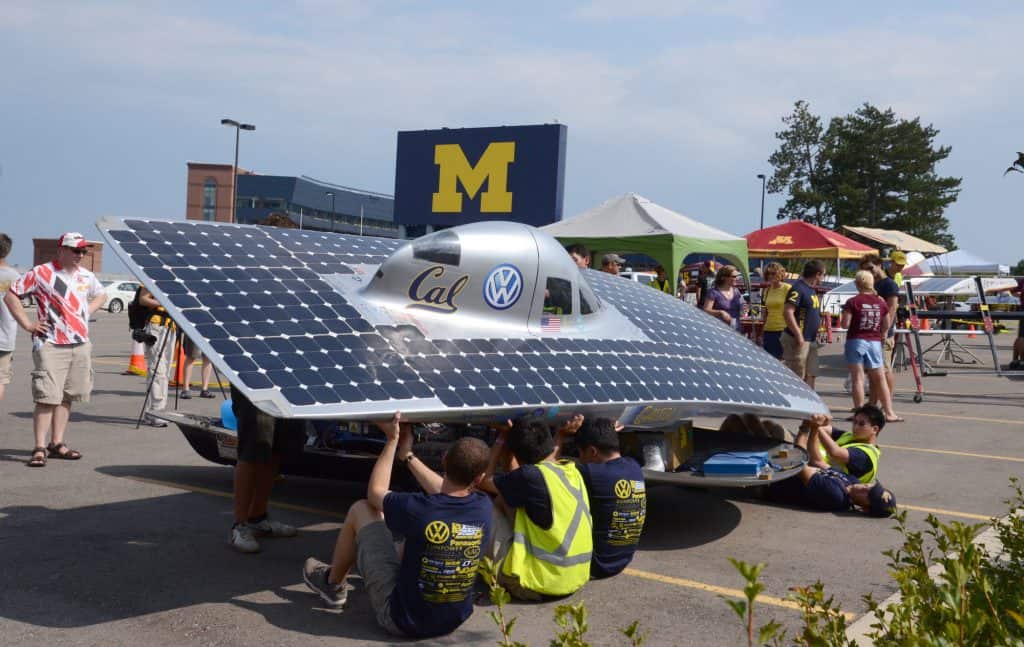
Let’s tie all of this information together now and try to answer our core question completely. Are solar panels to charge the Nissan Leaf while driving a pipe dream, or a reality? Technically, the idea has become a reality both for Sam and James that were mentioned above. James’ idea is applied to a Chevrolet Bolt, granted, but the principle should work on other cars should he be able to identify the right components as he did on the Bolt, no?
First of all, we clearly have an expertise gap here. Turning your Leaf into a solar-powered machine clearly is not something that you can do on a whim as you might with other modifications like new alloy rims, a new spoiler, or adding decals to the car. A tremendous amount of both technical knowledge and financial investment are required, as is the sacrifice of huge amounts of internal space and added roof weight as we learned from Sam’s Nissan Leaf.
But what about the OEMs like Nissan? They’re huge corporations with billions of dollars and mountains of experts who could get the job done, no? Remember that a company like Nissan has to make a car that has mass market appeal. No offense to either Sam or James, but their cars are (arguably) a bit unsightly.
That’s the other issue we have. There’s no way to achieve the technical reality and aesthetic requirement all at once right now, in a way that appeals to the mass market.
Perhaps in years to come when more power can be concentrated into less surface area of a solar cell, then Nissan might be able to turn the entire roof and hood into a seamless solar panel that looks no different from a regular roof.
For now, however, for the sake of your warranty and sanity, we strongly advise you against attempting DIY rigging of a solar array to your Nissan Leaf. In the video above, Sam also admits that to get it working properly even requires hacking of the Nissan computer, something which undoubtedly would go against Nissan’s guidelines.
For now, continue to dream, and explore solar charging options at home to make your Nissan Leaf greener than ever. Hopefully entrepreneurs and innovators like Sam and James will inspire engineers at Nissan to make those technical possibilities into viable commercial realities.
